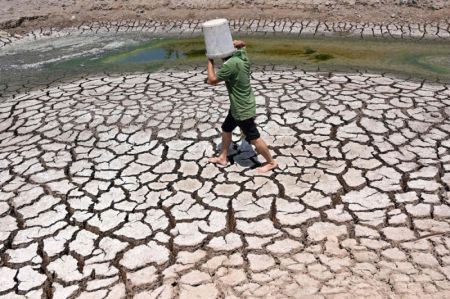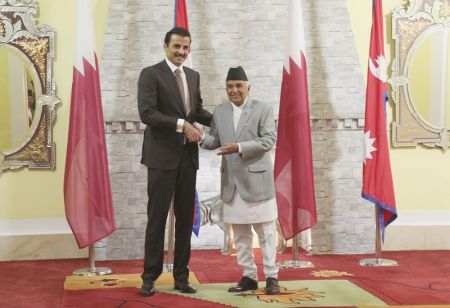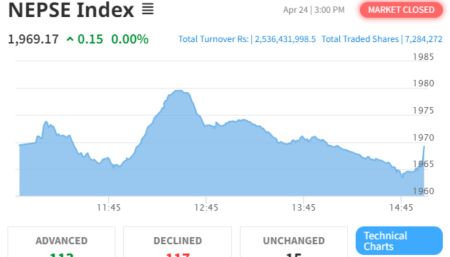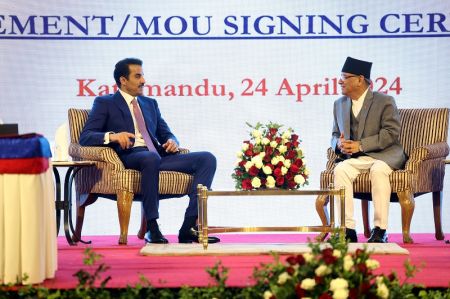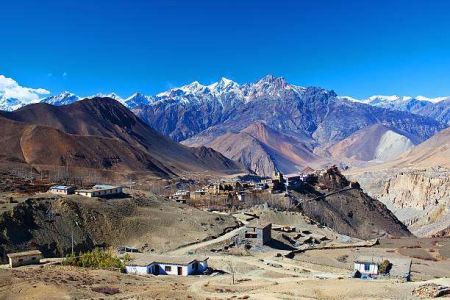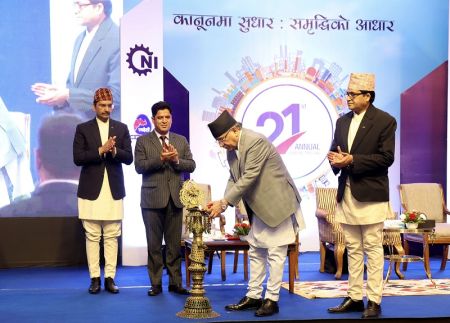
“Piluwa Khola Small Hydropower Project is an exemplary hydropower project developed by the private sector.”

RAMESH NEUPANE
Managing Director, AVHDC
“Domestic capital and technology are sufficient to rescue the country from the present energy crisis,” Ramesh Neupane, Managing Director of Arun Valley Hydropower Development Company (AVHDC) asserts. The rationale for this claim is: his company has built a 3-MW Piluwa Khola Small Hydropower Project in Sankhuwasabha district within 36 months. Out of the total 75, there are 40 districts in Nepal suitable and feasible for electricity generation. If a 5-MW plant is established in each of these districts, about 200-MW of energy will be added to the national grid within three years. When private sector adds 200 MW of power every three years, it is very possible that the same force can liberate Nepal from the energy crisis within a short period of time.
According to Neupane, such a target can be achieved only if the government motivates the private sector. He underscored six points on making hydropower a centre of attraction for investment. First, the government should extend the license period from existing 35 years to at least 50 years for hydropower projects over 5 MW while the projects below it should be allowed to own the project for a lifetime. Second, Nepal Electricity Authority (NEA) must amend and increase electricity purchase rate in line with the inflation rate. “Price of electricity should be determined on the basis of demand and supply. NEA should increase the electricity tariff to the customers and with this effect, should also provide reasonable price to hydropower project developers,” he said. Third, the government should exempt VAT to hydropower projects. Investment in hydropower projects should be declared as tax free business till the country does not have sufficient power. This will help to attract investment into this sector. Fourth, Hydropower Finance and Development company of the government should be activated and provide long term loans on subsidised rates to the projects. Also, the capital market has to be liberal to raise funds from potential Nepali investors by issuing shares and debentures. Foreign investors should be attracted to invest in hydropower projects and allowed to trade shares in Nepal’s stock market. Fifth, the government should provide security to all projects.
The cost of the security staffs has to be borne by the government and some field allowances are to be paid by the developers. Lastly, the government should build high voltage transmission lines from North to South to transmit energy generated in the Northern region to the Southern market of Nepal. Private sector investment in BT and/ or BOT model has to be allowed and this work should get higher priority. Additionally, Nepali energy system has to be connected with the Indian system so that energy can be imported when there is shortage and supplied when there is a surplus. Therefore, the construction of Nepal-India Cross Border Transmission Line is the urgent demand of the nation.
In putting forward these constructive suggestions, Neupane speaks of his company’s experience as the pioneer company to introduce the concept of developing hydropower projects from the private investment in Nepal. In 1997, when the entire country was in the grip of Maoist insurgency, a group of people dared to establish Arun Valley Hydropower Development Company believing that it is possible for the private sector to build capital intensive projects such as hydropower provided there is a favourable environment, laws and policies for investment. The objective behind the establishment of Arun Valley was to construct, develop and operate small hydropower projects utilising domestic resources, technology and capital.
When they planned to embark on their first project - Piluwa Khola Small Hydropower Project - they not only had to face difficulty to get the government’s support but also to fetch finance for it. When the AVHDC team approached the then Minister for Water Resources Sailaja Acharya with the concept, she expressed her surprise over the idea of a private sector company developing hydropower projects. But, impressed with their innovative concept, she pleaded help in every step of their project development. Their follow-ups in the Ministry of Water Resources bore fruits when NEA started to sign Power Purchase Agreement (PPA) with the private power developers.
The team got a survey license from the Department of Electricity Development (DoED) of NEA to conduct feasibility study of Piluwa Khola Small Hydropower Project in Sankhuwasabha district. After completion of the survey, they applied for PPA. Minister Acharya helped them in getting a rate of Rs 3.0 for the wet season and Rs 4.25 for the dry season with an escalation of 6 percent for a period of five years. The escalation was supposed to be revised after five years but has not taken place till date, said Neupane. At that time, another setback was to find loan capital for the project. The project was planned with 30 per cent equity of the company and arranging 70 per cent loan from banks and financial institutions (BFIs). “As hydropower projects were the new investment area for the Nepali commercial banks, they were not ready to provide us loan in the initial phase,” said Neupane. Most of the BFIs doubted whether a private company can actually build and complete a hydropower project and will be able to pay back the loan amount. Finally, Manoj Goyal, the then CEO of the Bank of Kathmandu (BoK) took the risk and the first project of the company was financed and completed within the targeted time frame of 36 months. The project construction work was started in February 2001 and was completed in June 2003 while commercial operation started from August 2003. Arun Valley now has its own land and office building at Milan Chowk of Baneshwor and is listed in Nepal Stock Exchange.
“The share price of this company ranges between Rs 300 and Rs 400 and the company claims that the market price of an Arun Valley Hydropower Company share will not be less than Rs 1000 upon the completion of Kabeli B1 Hydropower Project. “Piluwa Khola Small Hydropower Project is an exemplary hydropower project developed by the private sector,” argues Neupane. The company has been regularly distributing dividends to the shareholders of the company for the last seven years. “Investors have already got the return of their initial investment on the project. What they are getting now is their bonus,” shares Neupane. The second project of AVHDC is Kabeli-B1 Hydroelectric Project on Kabeli River flowing through the border of Taplejung and Panchthar districts. The project has completed the detailed feasibility study. The run-of-river project with an installed capacity of 25 MW, will sign PPA with the NEA within mid July. “The total project cost is estimated to be Rs 3,500 million. Of this total investment, 70 percent (Rs 2,450 million) will be raised from bank loan and the remaining Rs 1,050 million from the equity of share holders,” said Neupane. The company will issue rights shares to its existing shareholders to finance this project.
A new company named Arun Kabeli Power Limited has been established as Arun Valley’s sister company to look after this project. “We have acquired 50 ropanis of land for the project and will be floating 39 per cent of the project company’s shares to the strategic partners in the beginning of next fiscal year,” said Neupane. Arun Valley Hydropower Development Company Limited will hold 51 per cent share of the project while the local people will have the opportunity to invest up to 10 per cent of the equity investment in this project.
Lower Pheme Khola Small Hydropower Project is the second under construction project of the company located in the Mechi corridor. The project with an estimated cost of Rs 436 million has also reached the stage of PPA signing. “We will begin construction work immediately after signing the PPA,” said Neupane.
The third project under development, Upper Piluwa Khola Small Hydropower Project, is being developed by Upper Piluwa Khola Hydropower Company Limited. AVHDC has the majority shares of this company. The project will be developed by setting-up a diversion weir from five kilometre up-stream of existing Piluwa Khola Small Hydropower Project. The project with an installed capacity of 9.6 MW has also reached the stage of PPA signing. Talking about the uniqueness of his company, Neupane shares that his company has more than 22,000 big and small shareholders. The company is in favour of mobilizing large number of people as investors in hydropower projects. The size of investment is as low as Rs 100,000. The company strives to keep the project construction costs low, complete the projects on time and distribute dividends to shareholders. Arun Valley is committed to utilise domestic capital, resources and technology to the optimum level and give relief to the country from prolonged hours of load-shedding even during the monsoon. “We have bid goodbye to load shedding in Gulmi and Sankhuwasabha districts. It is our vision now to lift the entire country from the existing energy crisis,” shares Neupane.
It is his understanding that entrepreneurship, dedication and hardworking makes any project a success. “The technology for generating power from the running mountain water is well proven. We simply follow the art of technology,” he said. Neupane supports the idea of Foreign Direct Investment (FDI) to cash Nepal’s optimum potential in hydropower sector. He believes that the present political instability is the main impediment in attracting FDI in Nepal. “The first thing foreign investors consider is the risk involved in their investment. To minimise the risk, the government should sign a Power Development Agreement (PDA) with all the big and small project developers as well as local and foreign investors,” said Neupane. According to him, FDI will increase if the government requests foreign investors to invest in Nepal by agreeing to guarantee the security of their investments. The company also plans to attract new investors to invest in its new power projects namely Kable B-1 (25 MW), Upper Piluwa Khola (9.6 MW) and Lower Pheme Khola (3.5MW).
Swot Analysis
STRENGTHS
• Motivated staffs
• Stability of the company
• Loan free company
• Listed in the Nepal Stock exchange
WEAKNESSES
• Employee turnover
• Difference of thought between developers
OPPORTUNITIES
• Developing partnership with local government
• Developing projects with foreign investors
THREATS
• Unhealthy competition








